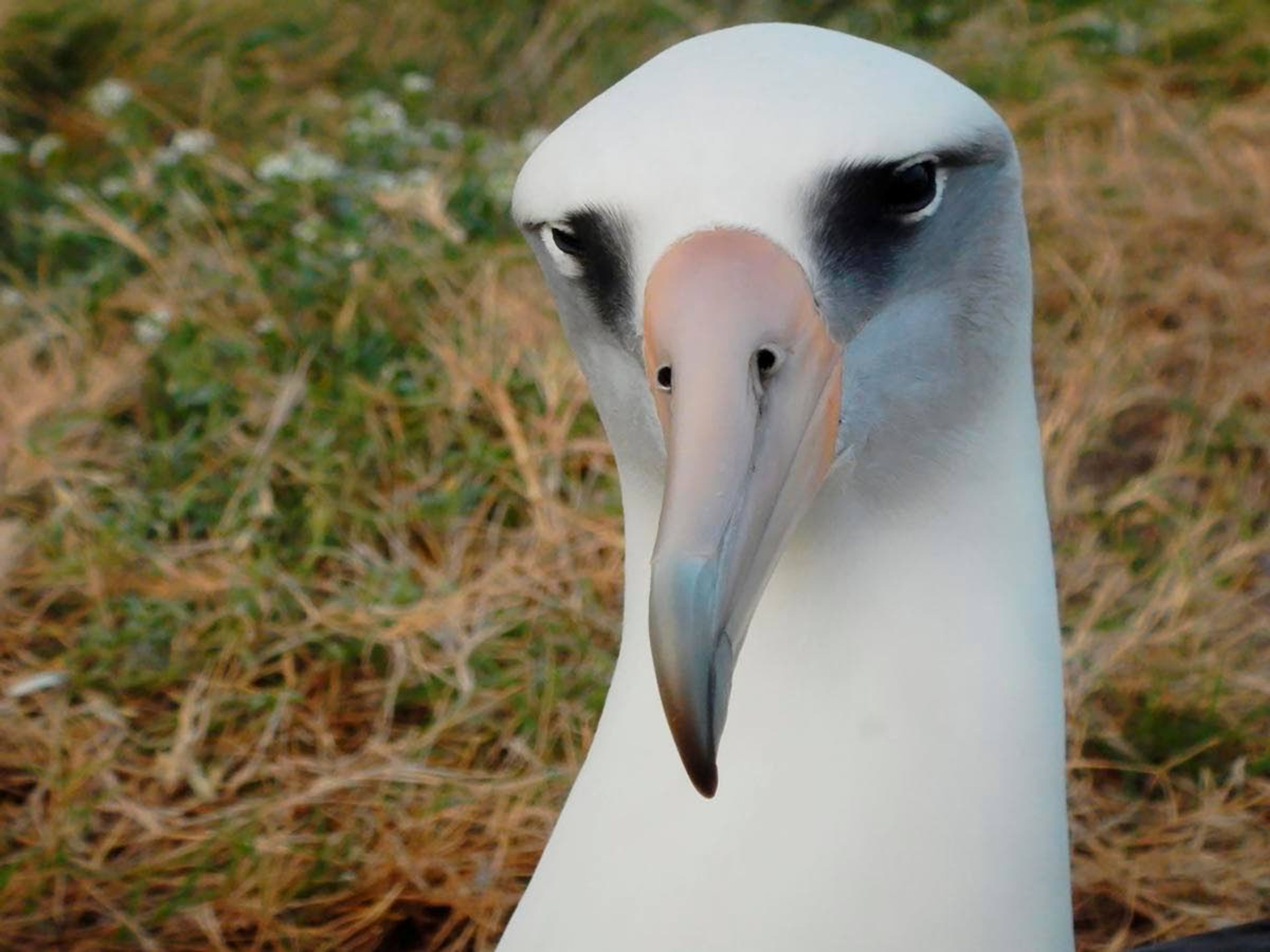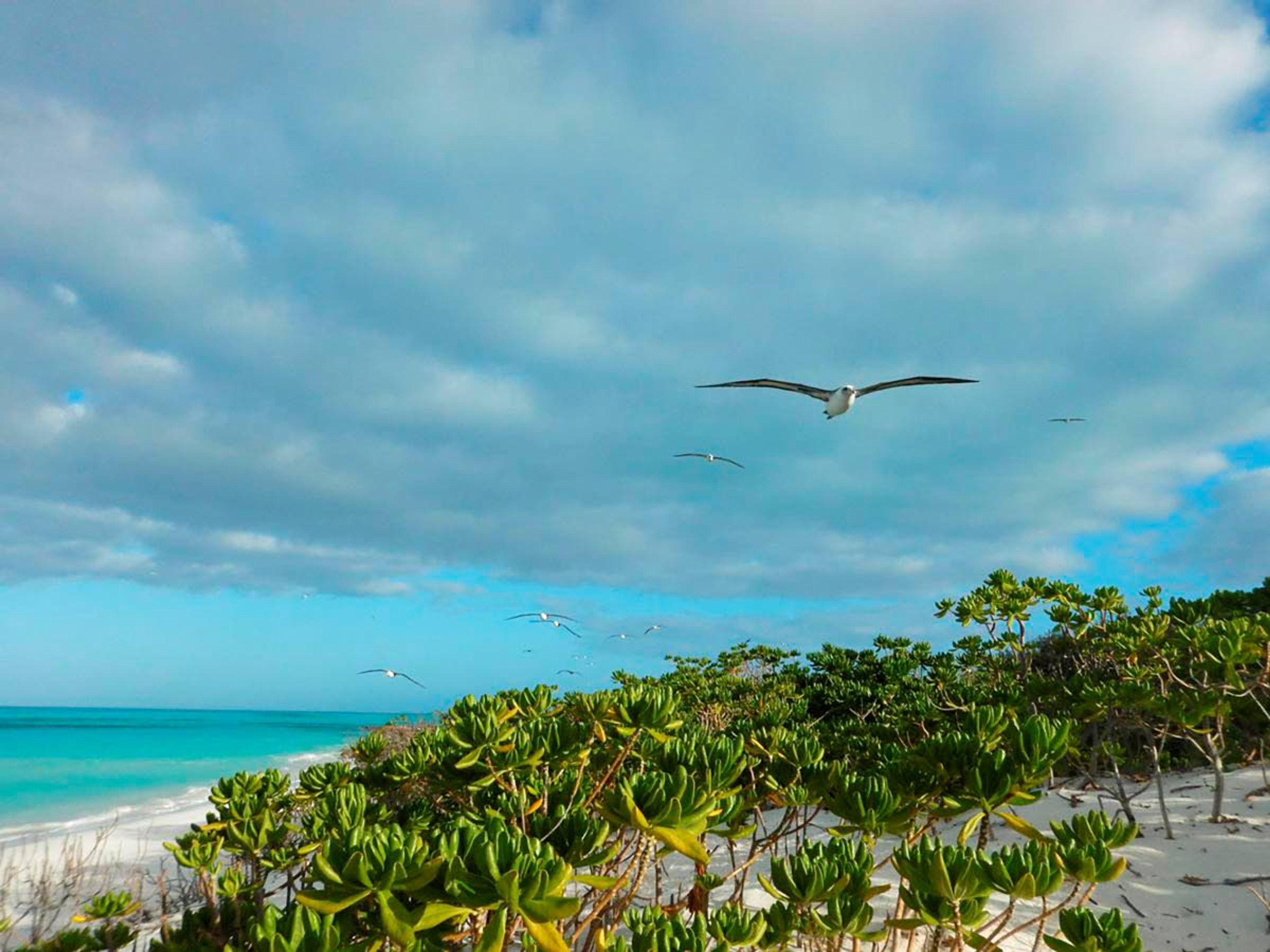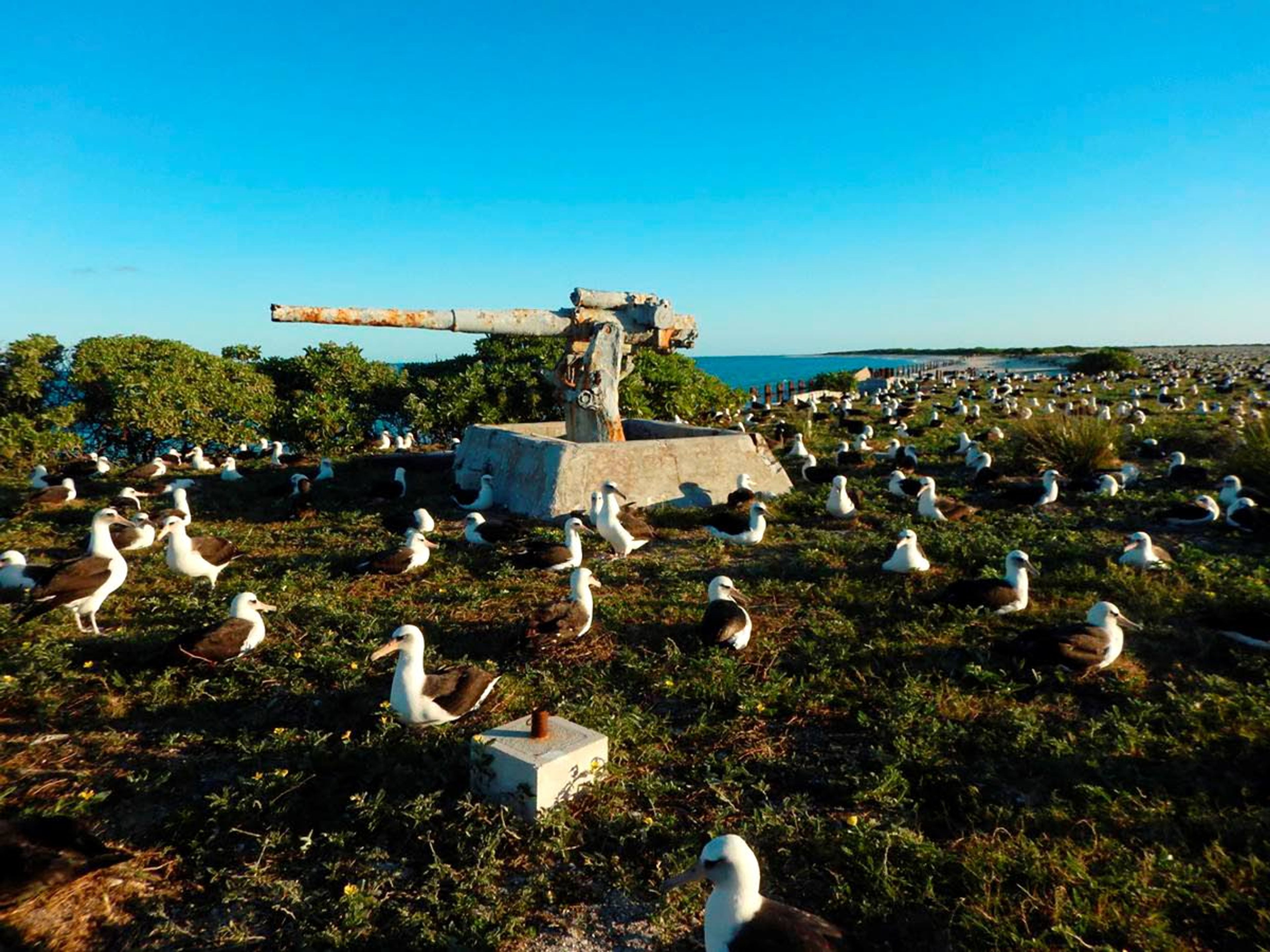Bird sanctuary
Kootenai Tribe fish biologist gets up-close look at tiny islands that house world’s albatross population
She landed at night, the plane touching down more than 1,000 miles west of Hawaii, on a strip of land barely distinguishable from the heaving swells of the Pacific Ocean.
Yet as the plane came to a stop, its engines quieting and its doors opening to the tropical air, she didn’t hear waves.
She heard birds.
“You get off this plane, and it’s instantly noisy,” Genny Hoyle said. “Even at night. It’s 24/7 bird noise.”
In December and January, Hoyle, a fish biologist for the Kootenai Tribe of Idaho, spent four weeks at Midway Atoll in the Pacific Ocean surveying the tiny island’s albatross population.
Despite the island’s size (Midway, Sand and Eastern island are a combined 1,549 acres) scientists estimate that around 70 percent of the world’s population of albatross nests there.
“It’s kind of a magical place,” Hoyle said. “Because you’re surrounded by all these highly endangered animals, but you see them every day.”
Hoyle, alongside 18 other volunteers, spent her days counting the nests created by Laysan and black-footed albatross. These seafaring birds return to land every five or so years to breed. Their brief sojourn on the soil is one of the few times biologists can easily study the animals.
Since the early 1990s the U.S. Fish and Wildlife Service has conducted an annual survey of the birds’ nests on Midway using volunteers. It’s an exhaustive count in which volunteers walk every square inch of Midway and its two neighboring islands.
“It was kind of like moving meditation,” Hoyle said of the work.
Hoyle stumbled upon the volunteer program while perusing Facebook. She applied in 2017, but didn’t get a spot. It’s not uncommon for 50 people to apply for the 18 available spots. The volunteer program is one of the few ways people can visit the island, which is closed to the public.
She was surprised when she was selected in 2018.
“It was kind of right up my alley, even though I’m not a bird person,” she said.
Albatross have been nesting on islands in the Hawaiian archipelago (of which Midway is a part) for thousands of years.
A long-lived bird, albatross have an average lifespan of 55 years. The world’s oldest wild bird, 68-year-old Wisdom, is an albatross that lives on Midway. She laid an egg in 2018.
“She’s pretty famous,” Hoyle said. “She was right next to our sleeping quarters.”
Despite their natural longevity, albatross have struggled over the centuries. Non-native domestic animals, like cats and dogs, introduced to the islands preyed on the birds, which have no natural fear of the foreign mammals.
Humans also contributed. In the 1800s and 1900s, albatross were pushed to the brink of extinction by feather hunters who sold the plumage to European hat makers. Additionally, the whites of their eggs were used in film production.
During World War II, the birds were killed by the U.S. military to clear runways for planes.
When the volunteer survey program started in the 1990s, albatross populations were struggling. The birds were frequently the victims of driftnets and longline fisheries.
Both black-footed and Laysan albatross were species of concern, although they were never listed in the United States, said Beth Flint, the supervisory wildlife biologist for U.S. Fish and Wildlife Service at the Pacific Remote Islands National Wildlife Refuge Complex.
Flint, a University of Montana graduate who became interested in seabirds during a course on arctic and alpine ecology, established the volunteer program and has overseen it for nearly 20 years.
Midway is a particularly good study area because most of the world’s Laysan albatross nest there and it’s accessible by plane. During the winter months, when albatross nest, it can be difficult to access islands by boat because of the larger winter waves.
The volunteer survey program has allowed the U.S. Fish Wildlife Service to keep a close eye on the avian population. In 2015, the volunteers discovered that the albatross were being attacked and killed by non-native house mice.
Mice have a long history of decimating island birds who evolved with no fear of, or defense against, the small mammals.
Up until the Midway volunteers noticed bloodied and dead birds, “no one had ever imagined that mice could kill an adult albatross,” Flint said.
But they were. Video showed stoic albatross refusing to leave their eggs even as mice attacked them.
Now, the mice population is being controlled, and Flint said the U.S. Fish and Wildlife Service plans to eradicate all mice from the islands soon.
“Sometimes when you’re doing one survey or one kind of census or count, it allows you to discover other problems or other issues,” she said.
The focus on albatross has been beneficial to other, less charismatic sea birds with similar ecological requirements. Because they only lay an egg a year, albatross are a particularly sensitive species — like caribou — and can serve as a harbinger of what’s to come for more robust animals.
These are all reasons why the volunteer program has been important, Flint said.
“The Fish and Wildlife Service could not afford to do that count by themselves,” she said.
While the albatross population has stabilized since the 1990s, with fishing laws and regulations cutting down on mortality, new threats face the birds, Flint said.
In October, roughly 2,000 nest sites were lost when East Island disappeared after Hurricane Walaka blew through. In addition to the albatross nesting sites, the island was a nesting ground for Hawaii’s green sea turtles and Hawaiian monk seals. East Island, the second-largest island in the French Frigate Shoals, was about 500 miles from Hawaii.
“We lost an entire island,” Flint said.
With a warming climate raising sea levels, island loss is expected to accelerate.
For seabirds like albatross, which nest on low-lying islands, the effects are already manifesting.
“For albatross, it’s quickly flipping over from being a hypothetical problem to a real problem,” Flint said.
Albatross, which mate for life, return to the exact spot they were born. There, the female lays one egg, which the male and female take turns caring for until it hatches.
If that spot disappears, they won’t mate that year, and may never mate until they find a new site and a new mate, Flint said.
“It’s very anxiety-producing for us,” she said.
In addition to submerging nesting sites, ocean acidification, caused partially by increased levels of carbon dioxide, leads to the death of coral reefs. Without reefs, which naturally die and break down into sand, islands can’t form, Flint said.
As the volunteer program nears its 20th anniversary, Flint said albatross managers have a new focus. They’re starting to relocate the young birds to higher nesting grounds in the Hawaiian archipelago.
Flint predicts that relocating species to new latitudes will become more common as climate change continues to change the natural world.
“When you’re dealing with the conservation of natural systems and wildlife, it’s good to be a pessimist and plan for the worst-case scenario as opposed to being optimistic,” she said.
For Hoyle, the Kootenai Tribe fish biologist, the four-week trip highlighted and oft-repeated truism: Everything is connected.
“It added to my knowledge of what is going on in the world,” she said.
The challenges the albatross face — from hunting to sea-level rise — give Hoyle hope.
“Being around the birds, it was a lesson in resiliency,” she said. “After World War II, the egg hunting, the habitat loss and the invasive species, (and yet) they hung on somehow and they’re doing OK.”











